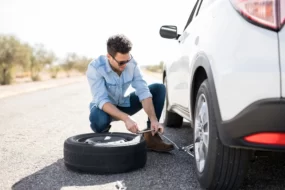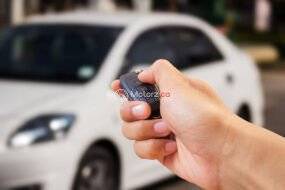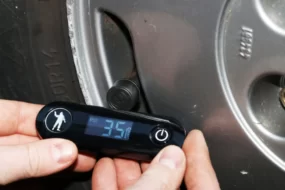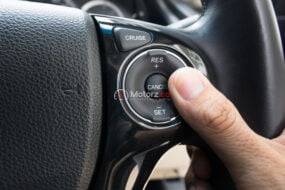The Science of Braking How to Stop Your Car Safely When it comes to road safety, one of the most crucial aspects is the ability to stop your car effectively. The science of braking goes beyond just pressing a pedal; it involves a complex interplay of physics, engineering, and human factors. In this article, we’ll explore the key components of braking systems, the physics behind stopping a moving vehicle, and essential tips to ensure you stop safely.
Brake Pedal
At the heart of any braking system is the brake pedal. When you press it, you’re initiating a series of events that ultimately result in your car coming to a stop. Connected to the brake pedal, the master cylinder converts the force from your foot into hydraulic pressure. This pressure is then transmitted through brake fluid to the braking components at each wheel.Stop Your Car Safely Brake fluid travels through a network of brake lines and hoses, ensuring that the pressure reaches each brake caliper or drum.
Brake Calipers and Discs (or Drums)
In modern cars, disc brakes are more common. They consist of a brake caliper that houses brake pads, which clamp onto a rotating disc attached to the wheel. In older or less advanced systems, drum brakes use brake shoes that press against the inside of a drum to slow down the wheel. These are the friction materials that make direct contact with the disc or drum, generating the necessary friction to slow down or stop the wheel’s rotation.
Physics of Braking
The science behind braking is grounded in the laws of physics, specifically Newton’s laws of motion. Stop Your Car Safely When you apply the brakes, you’re essentially trying to alter the motion of a moving object—the car. The kinetic energy of the moving car is converted into heat through friction between the brake pads and the discs or drums. The car’s kinetic energy is directly proportional to its mass and the square of its velocity. When braking, this energy is converted into heat, and the faster the car is moving, the more heat is generated.
Friction and Grip
The effectiveness of braking depends on the friction between the brake pads and the discs or drums. Factors such as road conditions, tire grip, and the condition of the braking components play a crucial role. The weight distribution of the vehicle also affects braking. A well-balanced car allows for more even distribution of braking force, ensuring that each wheel contributes to the stopping power.
Tips for Safe Braking
Regular brake inspections and maintenance are essential. This includes checking brake fluid levels, replacing worn-out brake pads, and ensuring that the entire braking system is in optimal condition. Good drivers anticipate potential hazards and plan their braking accordingly. Gradual, smooth braking is generally safer and more effective than sudden, harsh stops. Adhering to speed limits and adjusting your speed based on road conditions is crucial for safe braking.
Avoid Overheating
Excessive and continuous braking can lead to overheating, reducing the effectiveness of the braking system. Give your brakes time to cool down, especially during long descents. Downshifting or using engine braking can help slow down the vehicle without relying solely on the brakes. Brake systems are like the unsung heroes of road safety, but even heroes need a breather. When you overuse your brakes, they generate a ton of heat. And guess what? Too much heat can make them less effective. It’s like their kryptonite.
ABS (Anti-lock Braking System)
Understand how your vehicle’s ABS works. In emergency situations, ABS prevents wheel lockup, maintaining steering control. Avoid pumping the brakes if your car is equipped with ABS.When you slam on the brakes, ABS quickly pumps them for you, faster than any human could. This prevents your wheels from locking up, giving you the power to steer even when you’re in panic mode. It’s like having a co-pilot for braking.
Conclusion
Stop Your Car Safely is not just a mechanical function; it’s a science that involves a delicate balance of forces, friction, and human decision-making. Understanding the intricacies of braking systems and the physics behind them empowers drivers to make informed choices, promoting not only personal safety but the safety of others on the road. So the next time you hit the brakes, remember, it’s not just about stopping; it’s about understanding the science that makes it possible. Safe travels!











